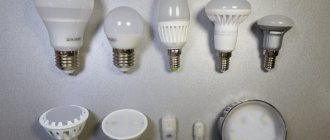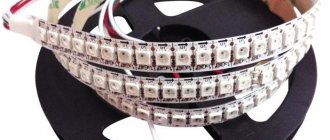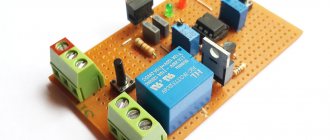Piezoelectric effect
- the ability of some materials to generate an electrical charge in response to applied mechanical stress. Piezoelectric crystals exhibit the piezoelectric effect. This piezoelectric effect has two properties. The first is the direct piezoelectric effect, which means that the material has the ability to convert mechanical deformation into electrical charge. The second is the opposite effect, in which the applied electrical potential is converted into mechanical strain energy. The piezo element of a lighter is an example of this effect.
Piezo element
Structurally, the piezoelectric element is a piezoceramic with applied electrodes. Piezoelements can be of various shapes: in the form of disks, rings, tubes, plates, spheres, etc. For vibrators and generators, piezoelements are combined into a piezoelectric stack to achieve better characteristics. Piezoelectric substances Piezoelectrics, in particular piezoceramics, have the property that when deformed under the influence of external mechanical pressure, electric charges arise on their surface. This effect is called the direct piezoelectric effect and was discovered in
Piezoelectric transducer
A piezoelectric plate is a device that uses the piezoelectric effect to measure pressure, acceleration, strain, or force by converting it into an electrical charge. Piezoelectricity is electricity generated by a piezoelectric element, the effect of which is called the piezoelectric effect. It is the ability of some materials to generate alternating current (AC) voltage when subjected to mechanical stress or vibration, or to vibrate when subjected to alternating voltage, or both. The most common piezoelectric material is quartz. Certain ceramics, Rochelle salts, and other other solids have this effect. When a sound wave hits one or both sides of the plates, the plates vibrate. The crystal raises this vibration, which results in weak AC voltage. Consequently, an alternating current voltage is generated between the two metal plates, with a waveform similar to that of sound waves. Conversely, if an AC signal is applied to the plates, it causes the crystal to vibrate in sync with the signal voltage. As a result, the metal plates also vibrate and create acoustic interference.
Almost every person has used a gas lighter, for example the IMCO TRIPLEX model, with a piezo element at least once in their life. This simple and useful device allows you to start a fire with just one click. A fire is formed due to the ignition of gas upon contact with an electrical discharge produced by the piezoelectric element of the lighter when the corresponding key is pressed.
When we press the button on the piezo lighter, we hear the crackle of a spark, then the gas burner flares up.
Search - repair of gas lighters.
A high-quality turbo lighter is a rather complex device. The main difference between a turbo lighter is a flame that does not go out in the wind; for this, a balanced mixture of gas and air is supplied to the lighter nozzle, then the mixture passes through a microscopic hole in the turbine, sharply picking up speed and flowing under high pressure into the upper part of the turbine, where the fire former is located. Burning inside this former, the flame practically does not go beyond the lighter. Thanks to this shaper, the flame of turbo lighters has a clear and stable shape. Some models are equipped with a refractory steel spiral, which heats up under the influence of fire and does not allow it to go out in strong winds due to thermal inertia. Depending on the insert located in the gas combustion chamber, the color of the fire can be burgundy, green, light yellow or blue. Are you having trouble finding a specific video?
Mechanism of action of the piezoelectric element
The basis here is a block of a piezoelectric element, which sends a pressure force from the button to the piezoelectric element itself. The main component of a piezoelectric element is a piezoelectric crystal. This is a plate cut from a quartz crystal. Its function is to convert mechanical deformation into electrical voltage. The plate is very hard, can withstand significant bending and compression and produce high voltage.
When you gently press the crystal, the output voltage will be small, but it will be long-lasting. When you press the crystal with the same force, but quickly and instantly, the output voltage is stronger, but it will be instantaneous.
Therefore, this property of the crystal is used to create a spark in a piezo lighter. To change the impact force from smooth to sharp, the lighter has a mechanism: an elastic spring, which is located under the piezo lighter button. By pressing the button, the spring is also compressed. After pressing the button all the way, the spring moves back the lever on which it rests. After this, the spring sharply straightens. At the other end of the spring there is a metal hammer, which, when the spring opens, strikes the crystal with great speed. On the back of the crystal there is a metal lining that prevents the crystal from moving due to the movement of the hammer.
The result is an instant and strong impact on the crystal, which causes a spark.
Piezoelectric element from a lighter: what can be done? Craftsmen have learned to use it in repairing (more precisely, in “killing”) smartphones or mobile phones. A logical question immediately arises: why would an individual with a healthy nervous system break his smartphone? The situation may vary. Someone wants to return the phone under warranty because he no longer likes it. Someone just decided to make fun of their friend.
Piezoelectric element_in_a lighter_how many_volts
There is no shortage of sensational publications attributing miraculous powers to piezoelectricity. Here, for example, is a quote: “Two years ago, several physicists tried to re-solve a formal problem: how to convert human mechanical energy into kilowatts of electrical energy. This is how the piezoelectric generator was born. First the first generation, then the second, and today the eighth version is already being tested in the laboratory. Lightly press the generator and: “Burn it all with fire.” ...and when everything is finally ready, a kind of revolution will take place in the field of alternative types of energy.” ( teros.org.ru
).
It is obvious that the piezoelectric element is not a source of energy. It is also clear that as a converter of mechanical energy into electrical energy, it will not revolutionize the energy industry. After all, what does the idea of using piezoelectric generators in sneakers, in asphalt, in an expander, on a ballerina’s legs come down to to generate current? All this comes down to obtaining unconventional electric current through mechanical work (by the way, with extremely low efficiency), which, in turn, is accomplished by burning traditional fuel and eating traditional potatoes. A piezoelectric generator is a converter, but not a source of electricity. As a converter, it occupies its rightful place in technology as a source of electrical charges, a source of high voltage for ignition purposes, insulation monitoring and many others. In some cases, it is advisable to use them as micropower power sources. In this article we will talk about piezoelectric generators designed to generate sparks and create electrical charges.
To understand the operation of a device, the main part of which is a piezoelectric generator, extensive theoretical knowledge is not required. It is enough to know only two quantities characterizing a piezoelectric material. This is the dielectric constant, since the capacitance of the piezoelectric element and the piezoelectric module depend on it. The piezoelectric module determines the amount of electric charge on the electrodes of the piezoelectric element when a unit of force is applied to them. Piezoceramics is described by three piezoelectric modules, depending on the orientation of the applied force relative to the polar axis of the piezoceramic sample. We will be interested in the piezoelectric module. The first subscript means that the polar axis is directed along the 3 or Z axis of the coordinate system (perpendicular to the electrodes). The second index says that the acting force is directed along the same axis. With this mutual orientation, the piezoelectric effect is most pronounced. The piezomodule is larger in size than piezomodules corresponding to other combinations of directions. For the direct piezoelectric effect, the piezomodule has the dimension “K/N” (coulomb: newton), and its value, depending on the brand of piezoceramics, is in the range from 200 to 500 picoculomb/newton (10 -12 K/N). Piezomodulus is a characteristic of a material. This means that if we make a piezoelectric element from piezoceramics with a piezoelectric module, for example, 240 * 10 -12 K/N, then whatever the dimensions of the piezoelectric element, whatever its shape, whatever way the force is applied, or point, or whether it is distributed over the entire surface of the electrode, we will always get a charge of 240 picoculombs on the electrodes if we apply a force of 1 Newton. What will be the voltage on the electrodes of the piezoelectric element? Let's use the well-known formula:
It follows from the formula that the voltage already depends on the size of the piezoelectric element, since the capacitance C included in the formula is a function of the interelectrode distance and the area of the electrodes. It is easy to check that in this example, putting the capacitance equal to 40 picofarads (this is the capacitance of the piezoelectric elements of the piezo lighter), we obtain that the voltage at a force of 1N will be equal to 6V. If we act with a force of 1000 N (100 kg), we get 6 kV.
This information is quite enough to analyze the operation of the piezoelectric generator. Let's do this using the example of a piezoelectric lighter.
How does a piezoelectric lighter work?
We will talk about a push-action piezo lighter, which emits a series of sparks as the key moves. There are impact lighters that produce a single spark when the impact mechanism is activated. A piezoelectric lighter is an example of perhaps the most successful use of a piezogenerator. This is one of the most popular household appliances in homes equipped with gas stoves for cooking. They are reliable, durable, require no maintenance and are always ready for use. Figure 1 shows a photograph of an open piezo lighter with a piezo generator. We will not dwell on the description of the design
Fig.1. Opened piezo lighter with piezo generator
piezoelectric generator, since there is nothing in it that goes beyond the intellectual heritage of Archimedes, but let’s consider a simplified model of the piezoelectric generator shown in Fig. 2. It is a support with a lever that allows you to apply
significant force on the piezoelements. Piezoelements, having the shape of a solid cylinder with electrodes on the end surfaces, are placed on top of each other and, as a result, are exposed to the same force. The piezoelements are oriented so that a charge of one sign is induced on the electrodes of the contacting surfaces, and a charge of another sign is induced on the opposite ones. The opposite electrodes are electrically closed by elements of the lever mechanism. Under such conditions, the piezoelectric elements are connected electrically in parallel. Let us remove a current conductor with a tip, preferably with a rounded end, from the contacting electrodes and place the tip at some distance from the metal base. Now, when you press the lever, a breakdown of the air gap between the tip and the base will occur. By pressing the lever harder, you can “strike” a second spark, a third, and so on, until we destroy the piezoelements. This is, at first glance, a simple principle of operation of a piezo lighter. However, you can take a closer look at this device. We will do this by posing several questions and tasks. The answers to them may be unexpected.
Break, don't do
The current discharge produced by the lighter's piezoelectric element can break your smartphone. It will be enough to “click” the metal connectors of the gadget, the headphone input, and the exposed parts of the board 8-12 times. If exposed to this, the phone will refuse to work. In this case, there will be no visible damage or melted elements. Now you can happily take your broken gadget to the salon and demand a refund. The service center should not understand anything.
But the piezoelectric element of a gas lighter cannot disable ordinary “dialers” made in the PRC. I don’t know why, but even after 50 shocks with a weak current, the push-button telephone continued to function properly.









